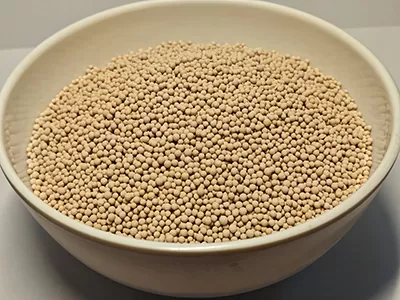3A molecular sieve dries ethanol through a size-exclusion mechanism, leveraging its 3-angstrom pore structure to separate water from ethanol. Water molecules, with a kinetic diameter of 2.8 angstroms, easily enter the sieve’s porous framework, while ethanol molecules (4.4 angstroms) are too large to penetrate, remaining in the liquid stream.

This selective adsorption is enhanced by the molecular sieve’s hydrophilic surface, which strongly attracts polar water molecules via electrostatic interactions. As ethanol passes through the sieve packing in dehydration columns, water is trapped within the pores, reducing the moisture content of the ethanol to below 0.1%—a critical threshold for applications like fuel ethanol or pharmaceutical solvents.
The process avoids co-adsorption of ethanol, ensuring minimal product loss compared to alternatives like distillation. After saturation, the 3A molecular sieve is regenerated by heating to 200–300°C, releasing adsorbed water and restoring its capacity. This regeneration can be repeated hundreds of times, making it cost-effective for continuous industrial use.
The combination of size selectivity and hydrophilicity allows 3A molecular sieve to efficiently dry ethanol even at low water concentrations, outperforming other desiccants in both purity and process efficiency.

